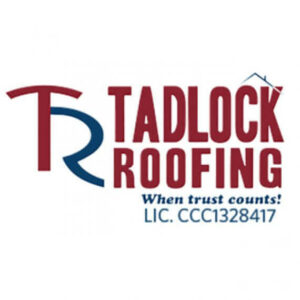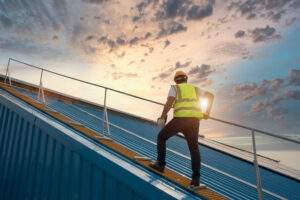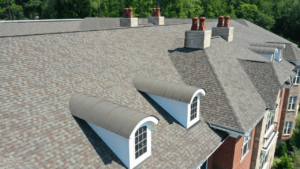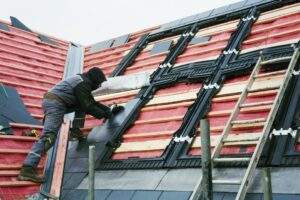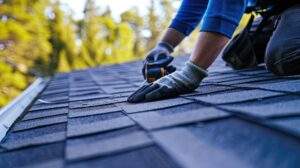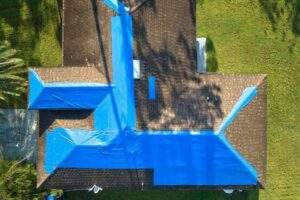As a roofing contractor trusted by homeowners across Florida’s capital city, Tadlock Roofing brings over four decades of experience to every project.
Many residents ask us, “What is a FORTIFIED roof?”
The answer is more than just stronger shingles or a new roof covering. It’s a complete, engineered structure designed to help protect against natural disasters like hurricanes, hail, and severe thunderstorms.
Whether you own a historic home in Old Town, operate a business near Florida State University, or live in a vulnerable area on the edges of Leon County, our certified team can deliver a FORTIFIED installation in two weeks or less, so you can protect your home without delay.
Key Takeaways
- A fortified roof in Tallahassee uses sealed decks, strong edges, and approved materials to meet Florida building standards.
- The system protects homes from high winds, water leaks, hail damage, and lifting at weak roof edges during storms.
- The process includes evaluation, removal, sealing, fastening with tested materials, and certification in two weeks or less.
- Certified fortified roofs provide lasting safety, possible insurance savings, and stronger protection for neighborhoods in the community.
What Is a Fortified Roof?
Under Florida’s codes, a fortified roof goes beyond traditional methods.
Fortified requires specific materials such as impact-resistant shingles, fully adhered starter strips, and wider drip edges for stronger edges at every perimeter. It also requires roof decks to be sealed, ensuring the wood beneath stays dry even if the roof covering is damaged.
In Tallahassee—a city shaped by its higher learning institutions and even historic influences from Union forces during the Civil War—earning a fortified designation means meeting strict fortified roof requirements verified by a fortified evaluator from the Insurance Institute of Business and Home Safety (IBHS).
These construction upgrades can also lead to insurance discounts and help safeguard neighborhoods across our community of fortified homes.
How Fortified Roofs Perform in Florida Storms
When it comes to how fortified roofs perform in Florida storms, each design element works together to address specific threats our region faces.
These systems are built as a unified defense.
Standing Up to High Winds
From coastal squalls to inland gusts, high winds can cause catastrophic storm damage.
A fortified system with better attachment methods prevents wind rips, keeping both the roof deck and covering intact—even in areas near agricultural land or along historic American territory routes through Leon County.
And because wind is often accompanied by heavy rain, the next layer of defense is just as important.
Preventing Water Damage
A sealed roof deck is critical for protection against water intrusion. Whether you’re near the shaded streets of Old Town or the busier corridors of the university town, this barrier keeps rain from soaking the wood beneath, reducing long-term risks of rot and mold.
Water isn’t the only threat.
Impact from hail can be just as damaging without the right materials in place.
Guarding Against Hail Impact
While Tallahassee isn’t the Midwest, hail-prone areas in North Florida still see damaging storms. An optional hail supplement with impact-resistant shingles can make a major difference in how your roof performs against icy impacts.
And to keep those shingles secure under both wind and hail stress, edge protection plays a critical role.
Holding the Line at Roof Edges
One weak point in many roofs is the perimeter.
Stronger edges reinforced with a fully adhered starter strip and wider drip edge prevent wind from lifting the roof covering, an essential safeguard in wide-open suburban lots.
How We Complete a Fortified Roof Installation in Just Two Weeks
At Tadlock Roofing, we’ve streamlined our fortified roof installation process so Tallahassee homeowners can gain the benefits of this stronger system without unnecessary delays.
Here’s how we deliver certified results in two weeks or less:
Step 1. Comprehensive Evaluation and Certification Planning
We begin with a fortified evaluator review, factoring in local regulations, the state university system calendar for project timing in busy higher education areas, and any neighborhood-specific needs.
This ensures a smooth path to a verified fortified designation.
Step 2. Removal and Deck Preparation
All existing roofing materials are removed, exposing the roof deck. Any damaged wood beneath is replaced to meet the fortified standards for deck performance.
Step 3. Sealed Roof Deck Application
Applying a continuous water barrier seals the deck—because fortified requires roof decks to be watertight—to protect homes from water damage year-round.
Step 4. Enhanced Fastening and Material Installation
Our crews use ring shank nails or common smooth nails in an enhanced pattern, along with specific materials such as impact-resistant shingles or metal panels.
These upgrades are backed by years of scientific research, demonstrating their ability to keep Florida homes safer and drier.
Step 5. Final Certification and Documentation
Once work is complete, your roof is inspected for compliance.
We’ll assist with your insurance company paperwork so you can access insurance discounts—a practical benefit alongside the protection of your structure.
Ready for a Stronger Roof?
Our work in Florida’s capital city blends the reliability of a local roofing contractor with the technical precision of national fortified standards. From construction upgrades to higher learning landmarks and beyond, we build stronger systems that help protect our community’s homes and history.
Contact us for your free estimate and learn more about our fortified roofing options for Tallahassee and surrounding Leon County communities.
Frequently Asked Questions
Can a fortified roof be added to an older home?
Yes, our team can retrofit many older homes by reinforcing the roof deck attached and upgrading materials to meet fortified requirements, ensuring improved safety and durability without compromising your home’s character.
How long does a fortified roof typically last?
A fortified roof can last decades with proper care. Using proven installation methods, high-quality materials, and regular maintenance services, we help extend its life even in Florida’s demanding climate.
Does a fortified roof help in all types of severe weather?
Yes, fortified roofs are designed for resilience in many conditions. They offer dependable protection during high winds, heavy rain, and hail, helping homeowners feel more secure during Florida’s severe weather seasons.
Will a fortified roof work with different architectural styles?
Yes, we customize each project to match your home’s design. Our experts work with varied roof shapes while ensuring all fortified requirements are met, making style compatibility increasingly important for both safety and curb appeal.



